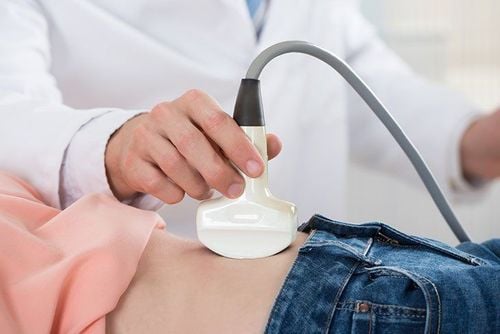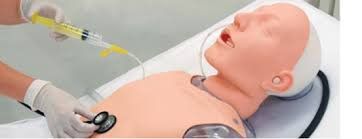This is an automatically translated article.
The article is professionally consulted by Master, Doctor Tong Van Hoan - Emergency Medicine Doctor - Emergency Department - Vinmec Danang International Hospital.A
Abdominal pain continues to pose urgent diagnostic challenges for clinicians. In many cases, the differential diagnosis is very broad, ranging from benign to life-threatening conditions. The associated symptoms often lack specificity and the atypical presentation of common diseases is a more frequent, complex problem.
Older adults, immunocompromised individuals, and women of childbearing age pose special diagnostic challenges. Elderly patients and patients with diabetes often have vague, nonspecific complaints and atypical findings about potentially life-threatening conditions that lead to time-consuming diagnosis. Immunocompromised patients can suffer from a wide range of illnesses, including unusual and therapy-related problems. Pregnancy leads to physiological and anatomical changes that influence the course of common diseases.
Acute abdominal pain is a very common condition in the emergency department, with extremely diverse causes. The most difficult thing is to distinguish this abdominal pain surgical indication or not from other abdominal pain. Sometimes surgical abdominal pain has a very subtle early presentation. In addition to functional investigations to support diagnosis, close monitoring of pain without excluding surgical causes helps us avoid unnecessary errors.
1.Diagnosis of acute abdominal pain
Diagnosis of abdominal pain must be based on history taking, physical examination, and exploratory tests.Exploiting the nature of pain
Spasm pain: intermittent, between episodes can be gone or dull (eg, liver colic, intestinal spasms, bowel obstruction...). Abdominal wall irritation pain: constant, dull, incessant, often reactive (eg, appendicitis peritonitis, intra-abdominal bleeding, perforated hollow viscera...). The pain spreads: related to posture, breathing... (eg, pneumonia, lumbosacral abscess, empyema...). Exploit pain location (each pain location has a value suggesting underlying organ damage)
Epigastric pain: gastritis, pancreatitis, myocardial infarction, hernia, bile duct worms,... Lower stomach pain: cystitis, bladder stones, adnexal metritis, ectopic pregnancy,... Pain around the navel: gastroenteritis,... Right lower quadrant pain: liver abscess, worms bile duct, acute cholecystitis,... Right iliac fossa pain: appendicitis, cecalitis, ureteral stones,... Left iliac fossa pain: ureteral stones, diverticulitis,... Bilateral pain ribs: ureteral stones.

The pain severity must be determined for analgesia early. Medication makes diagnosis easier and more accurate, rather than eliminating symptoms. 'The pain scale asks patients to self-assess. Score 0: no pain; score 10: most intense pain. Ask the patient to rate a scale from 0 to 10 and record the result: eg 4/10, 7/10. Take history
Time of onset of pain. Meal-related factors: poisoning, allergies? Pre-existing systemic diseases: chronic pancreatitis, gallstones, kidney stones,... Fever? Anemia? Clinical examination
Thorough examination of the abdomen (see, touch, percussion, auscultation) and hernias, rectum. Look for surgical signs: abdominal distention, increased peristalsis, floating bowel loops, abdominal wall reaction, peritoneal induction, strangulated hernia... Whole body: consciousness, pulse, blood pressure, breathing rate, shock, anemia, severe acidosis,... Subclinical
Should be selected depending on the patient and clinical orientation: Abdominal scan was not prepared: intestinal obstruction, perforated hollow viscera. Abdominal ultrasound: multiple effects, detecting pancreatic, liver, biliary tract, gallbladder, kidney, bladder, aorta... directional ultrasound in trauma (FAST). Abdominal computed tomography: pancreatitis, ureteral stones, appendicitis... Angiography: aortic dissection, mesenteric embolism. Supporting tests: blood count, amylase, D dimer, LDH, liver enzymes,... Diagnostic orientation
Usually the abdomen is an organ with many organs underneath, so the diagnosis of a specific disease clinical judgment is difficult. Using functional investigations to identify and find a diagnosis is increasingly important.
Perforation of hollow viscera: sudden severe pain, parietal: hard abdomen, abdominal wall reaction. Acute pancreatitis: epigastric pain, often accompanied by vomiting and abdominal distension, is common in alcoholic patients. Intestinal obstruction: intermittent visceral abdominal pain, abdominal distention, central retention, defecation. Cholelithiasis (gallstones, common bile duct stones...): right rib colic pain, fever, jaundice sometimes showing enlarged gallbladder, painful gallbladder hidden. Renal colic: severe pain in the ribs, spreading down or down the scrotum, painful or bloody urine. Appendicitis symptoms often depend on time to visit. Early stage sometimes only epigastric pain, low fever; Later stages: localized pain in the right iliac fossa, markedly responsive pressure.
2. Treatment orientation
Determine if this is unstable abdominal pain: cases of abdominal pain that affect vital functions. Example:Low blood pressure, rapid pulse. Infection - intoxication. Severe anemia. Consciousness disorder. Respiratory failure. Steps to take immediately
Get a monitor to monitor your pulse, blood pressure, SpO2, electrocardiogram depending on the specific case. Place an intravenous line, if there is shock, 2 large peripheral lines must be placed. Fasting if the patient has a suspected surgical indication. Do basic tests, coagulation, and tests needed for surgery. Insert a nasogastric tube to drain if the abdomen is distended, gastric juice should be monitored. Limit or pay special attention when moving the patient for scanning, ultrasound. Prioritize doing on-site investigations (limits the risk of having to transfer the patient out of the ward and can be done multiple times to monitor progress). Note the detection and management of acute abdominal syndrome (increased intra-abdominal pressure).

Need for emergency pain relief if pain > 4/10
Depending on the type of pain, give appropriate medication
Spasm pain: Buscopan, Visceralgin, Nospa, atropin. Abdominal wall irritation pain: Períalgan, Efferalgan, gastric capsule. Pain spreading: block local anesthetic: Feldene. Combined pain: combination of drugs or morphine (should be used at the right dose). Combined pain relief measures: cold compresses, encouragement, selection of pain-relieving positions... Always pay attention to determine whether there is an indication for acute surgery or not
Signs to detect: abdominal wall spasm, wall reaction abdomen, peritoneal tenderness, signs of bowel obstruction, right iliac fossa pain.
For cases of abdominal pain with clear cause and stable condition
Adequate pain relief. Send specialist treatment. In case of unknown diagnosis
Exclude dangerous causes with hidden manifestations: ectopic pregnancy, rupture of hollow viscera, atypical appendicitis, mesenteric embolism, diverticulitis.
Unexplained acute abdominal pain despite thorough examination and investigations and tests:
Close monitoring is required if the pain persists. Keep the patient lying down for monitoring (in many cases the cause is only revealed after monitoring for many hours to a few days). In summary, acute abdominal pain is severe pain that appears suddenly, can be caused by many causes and needs to be promptly treated, diagnosed and treated to prevent dangerous complications. to the patient's life. Patients need to go to a reputable hospital to conduct examination and treatment as soon as there are signs of acute abdominal pain. Currently, Vinmec International General Hospital is one of the leading prestigious hospitals in the country, trusted by a large number of patients for medical examination and treatment. Not only the physical system, modern equipment: 6 ultrasound rooms, 4 DR X-ray rooms (1 full-axis machine, 1 light machine, 1 general machine and 1 mammography machine) , 2 DR portable X-ray machines, 2 multi-row CT scanner rooms (1 128 rows and 1 16 arrays), 2 Magnetic resonance imaging rooms (1 3 Tesla and 1 1.5 Tesla), 1 room for 2 levels of interventional angiography and 1 room to measure bone mineral density.... Vinmec is also the place to gather a team of experienced doctors and nurses who will greatly assist in diagnosis and detection. early signs of abnormality in the patient's body. In particular, with a space designed according to 5-star hotel standards, Vinmec ensures to bring the patient the most comfort, friendliness and peace of mind.
Please dial HOTLINE for more information or register for an appointment HERE. Download MyVinmec app to make appointments faster and to manage your bookings easily.














